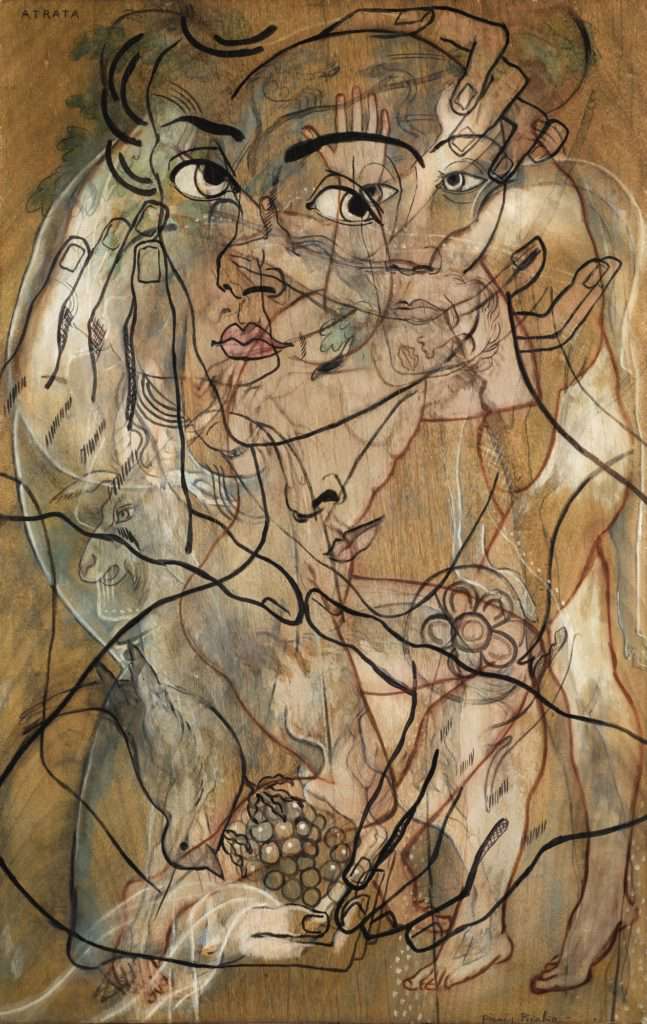The auction Surrealist Art Evening at Sotheby's London on 26 February next presents a selection of paintings, works on paper and objects by many by the likes of Man Ray, Duchamp, Miró, Ernst and Arp. Leading the sale is L'Etoile du matin by René Magritte (estimate 3,893,765 – 5,006,269 Euros) a painting of exceptional visual power and inventiveness.
Inspired by a photograph provided by his friend, the poet Marcel Mariën, he juxtaposes the profile of a Native American with that of his beloved wife Georgette.
Dating back to 1938, The Etoile du Matin it is among Magritte's most significant and significant works of the period. The choice of subject matter – combining an indigenous figure with that of his wife Georgette at the center of the composition – is one of a kind and has a strong visual impact. It is a composition of apparent simplicity, yet this belies a rich complexity that has allowed Magritte to continue his exploration of some of the most important ideas and themes that had occupied him for the previous decade.
The singular subject of the present work appears to have been inspired by the genesis of another painting, La chaine sans fin (now destroyed) which Magritte was working on the same year. Struggling with that composition Magritte turned to his friend Marcel Marien who had a large collection of photographs, including an image of a Native American in formal dress. Magritte was evidently struck by this image and in April 1938 wrote to his patron, the great English surrealist collector Edward James, to discuss this new topic.
Another important work of the auction is the monumental Atrata by Francis Picabia – one of the most extraordinary examples of the artist's famous series of transparencies executed in the late 20s. The work has been estimated at 1,668,756 – 2,225,009 Euros.

1879 – 1953
attracted
signed Francis Picabia (lower right) and titled (upper left)
oil and pencil on panel
149,5 by 95cm.
Painted around 1929.
Rich in imagery and historical references, mysterious in mood and delicate in execution, Atrata is one of Picabia's most striking examples of transparency. Created in the late 20s and early 30s, this body of work derives its name from multiple layers of superimposed imagery, combined with great virtuosity and the achievement of a cinematic effect. In the present painting, different faces, animals and fruits are amalgamated in an image of timeless and enigmatic beauty. Despite their transparent quality, the meaning of the faces remains unknown, and the composition appears to be a seemingly impenetrable allegory with the characteristics of a dream or mystical vision.
While Picabia returned to the old masters for inspiration, his art was both revolutionary and iconoclastic, and continues to influence generations of artists to this day. In 2016-17 Picabia's art was the subject of a large and acclaimed retrospective held in Zurich and New York, and in the exhibition catalog Cathérine Hug analyzes its impact on contemporary art: “Picabia has long been described as a artist, his influence seen in the work of a long and varied list of talents in recent decades that easily defy synthesis, an ancestor of such diverse currents of the XNUMXth century as Pop art, Neo-expressionism and Conceptual Art – indeed, an artist Peter Fischli is aptly described as “pre-postmodern” and one who continues to fascinate a young generation of artists today.”
In this series of works, Picabia often chose titles based on Greco-Roman biblical and mythological characters, as well as insect and animal names. The Latin word atrata – meaning 'dressed in black' – is used to designate several animal species, and may have been taken from Paul Girod's Atlas de poche des papillons de France, Suisse et Belgique, a small volume of which Picabia owned a copy and to which he often turned in search of exotic titles.
Picabia created his first transparencies in 1928 and the first examples of this series were exhibited at the Théophile Briant gallery in Paris in 1928. Having resigned from Picabia's earlier Dada output, the dealer Léonce Rosenberg was greatly impressed by these new works. Not only did he immediately buy three, but he also commissioned Picabia, together with Léger and De Chirico, to create decorative panels for his Parisian home. Rosenberg passionately promoted the art of Picabia executed during this period, and it was through his efforts that Atrata was included in two important early exhibitions: in October-November 1930, she appeared in Produktion Paris 1930, according to Maria Lluïsa Borràs – a very ambitious exhibition – which included works by Arp, Delaunay, Ernst, Gleizes and Mondrian, among others. In December of the same year Rosenberg included Atrata in a Paris gallery show, Picabia's first major retrospective covering several decades of his oeuvre. After being auctioned in Paris in 1974, Atrata remained in the same private collection for over forty years.




